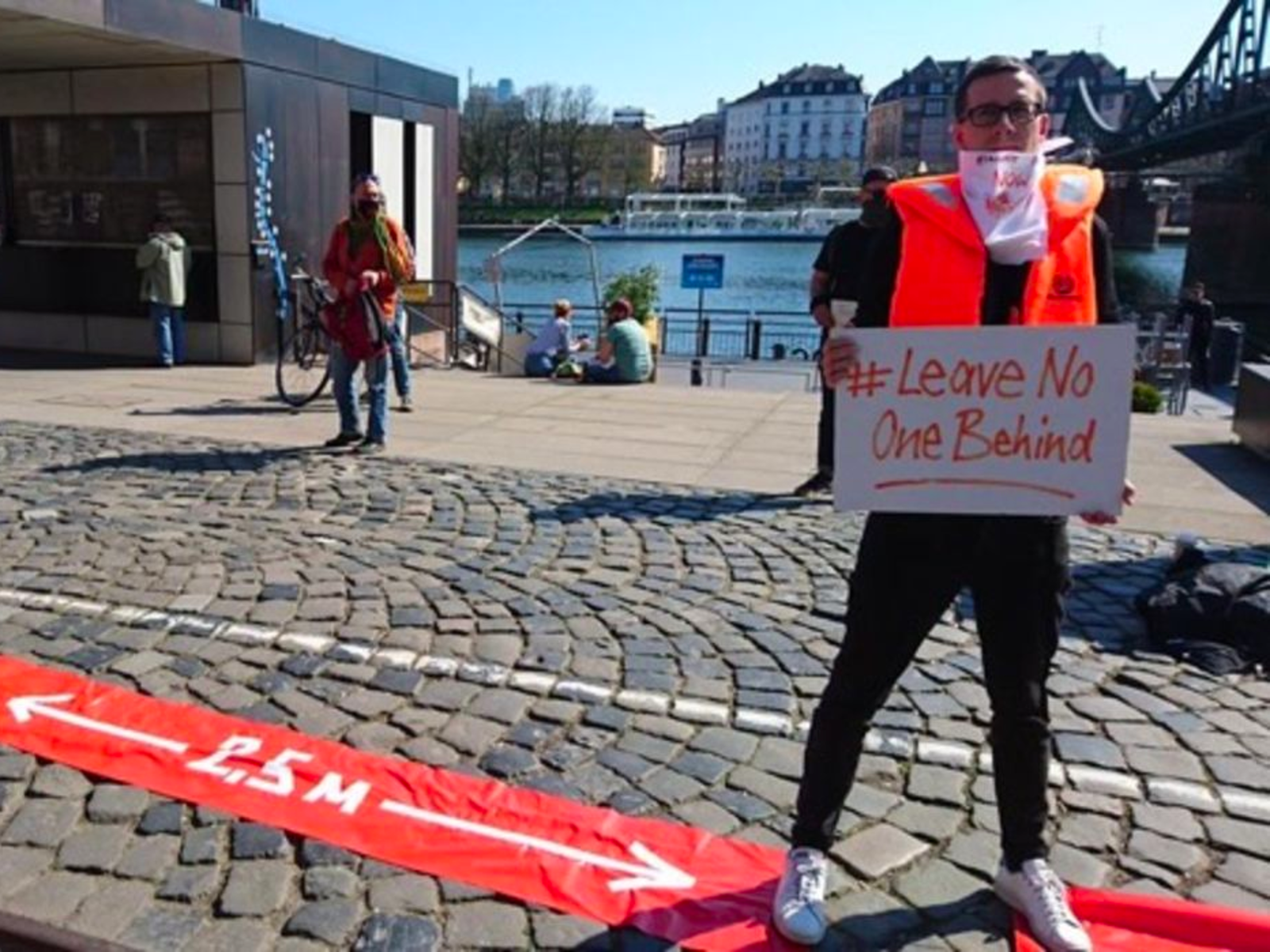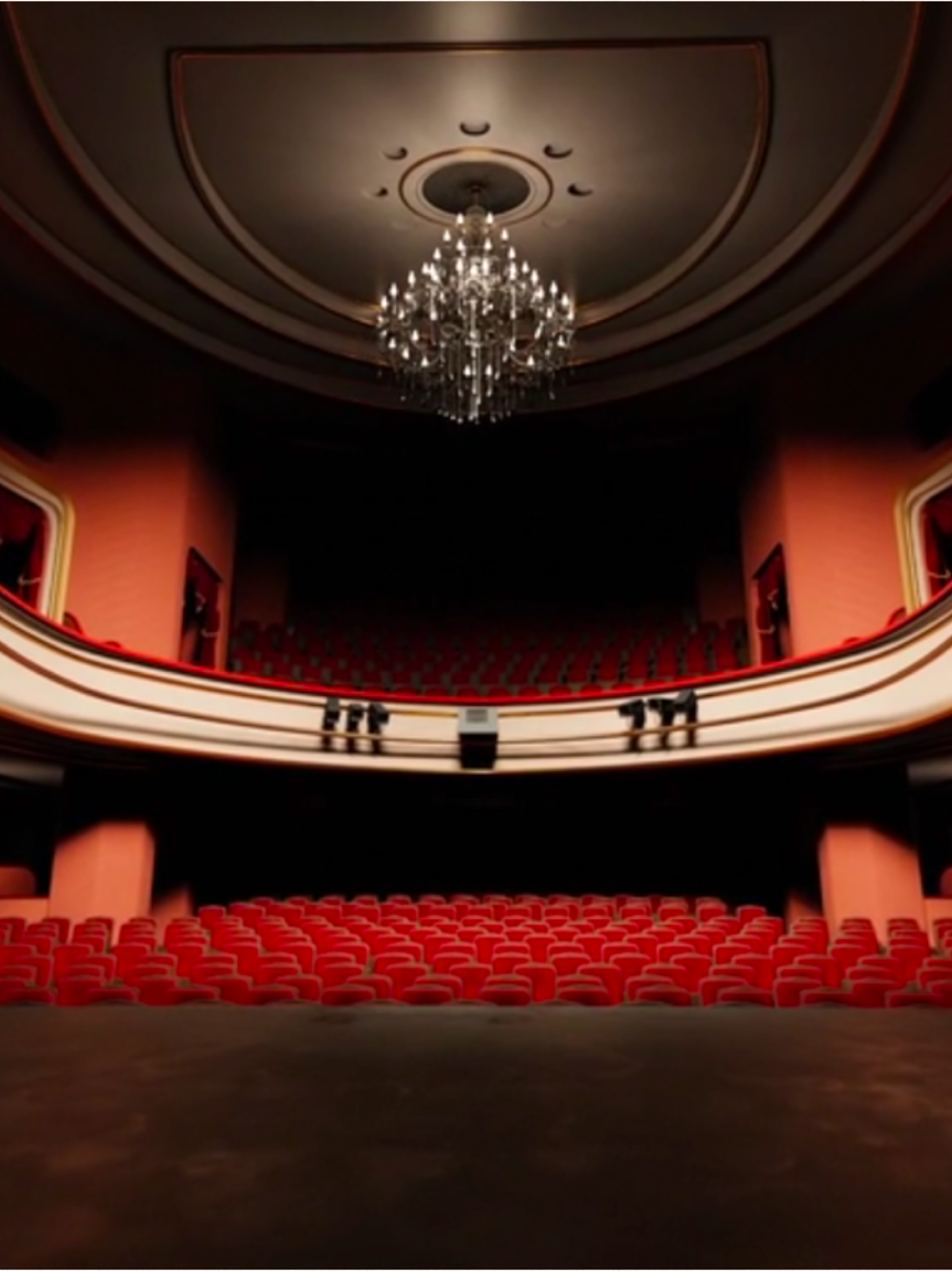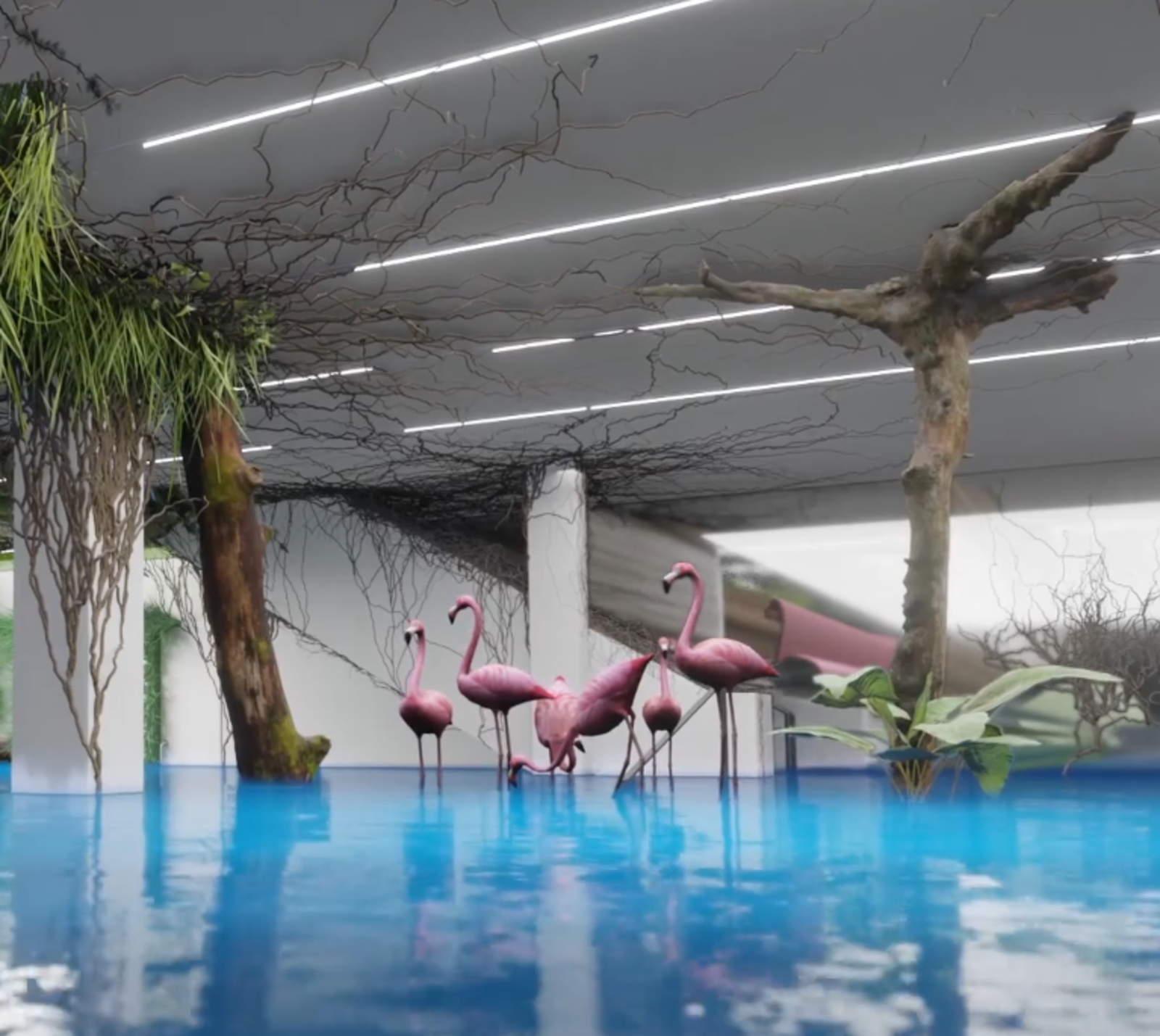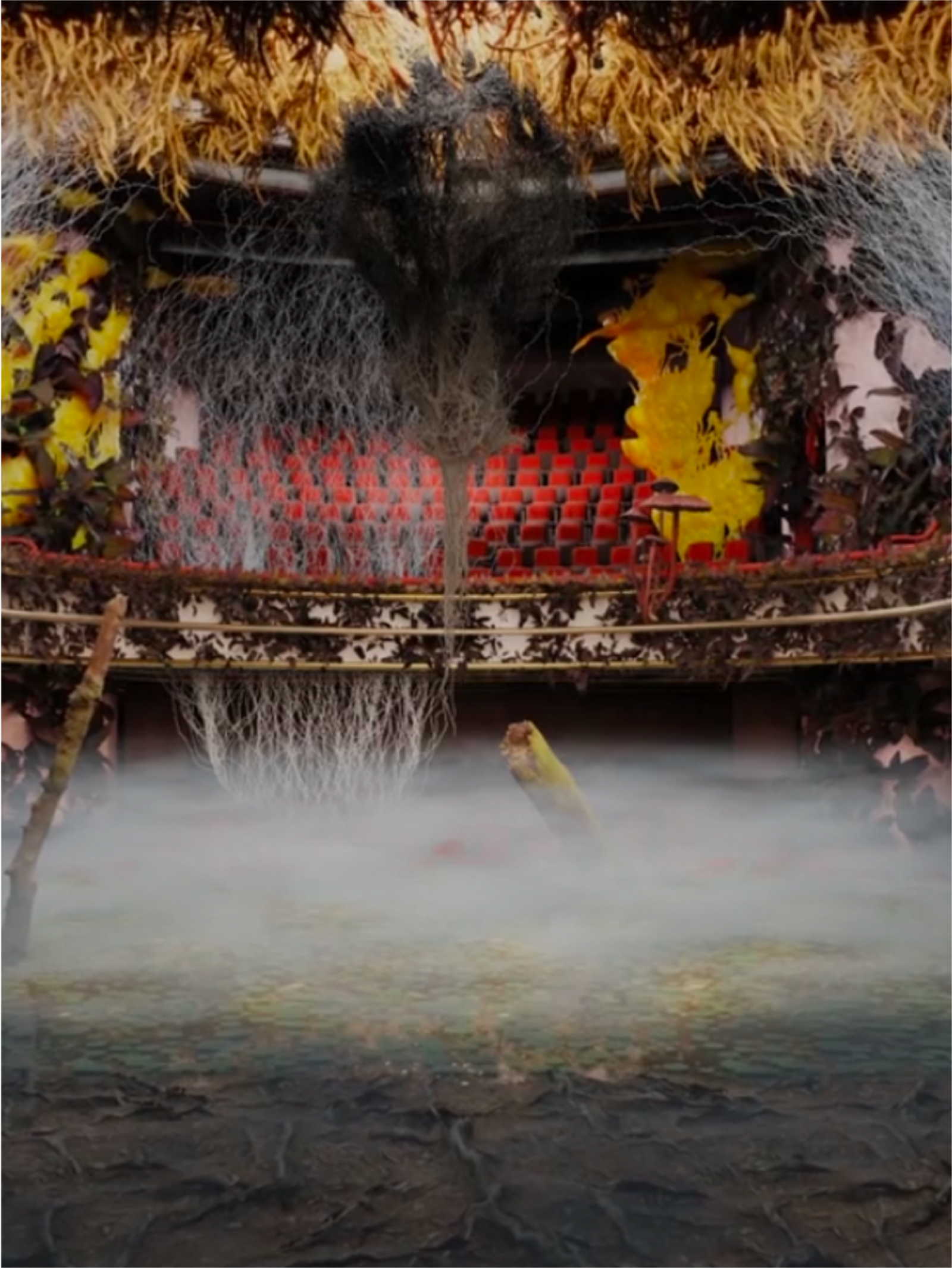Lockdown Theatre (1): Theater in Quarantäne
by Maximilian Haas und Joshua Wicke
published on 20. April 2020
"Lockdown Theatre" is a collection of theoretical thought experiments on the current condition. Introduced by Maximilian Haas und Joshua Wicke
The theatres are empty. Nobody is on the stage, performing for no one in the audience. The box office is unstaffed, the foyer is deserted, and possibly illuminated only by energy-saving emergency lighting. Maybe now and then a mouse scurries across the stage or a moth gnaws at the curtain - also here, in the theatre, as everywhere else, everything is different at the time of the lockdown. Here, as everywhere else, the void could be a resonating body to let the busy day-to-day production activities echo and leave room for quiet transformations which become noticeable in the unexpected silence.
The performing arts are particularly affected by this complex crisis – which spans between the virus SARS-CoV-2, the disease Covid-19, a crisis of systemic provision and care in ailing health care systems, and the massive measures to contain the pandemic. The basic unit of these art forms - the physical encounter, the co-presence of artists and the audience in the same room - has suddenly become a risk factor. Consequently, the theatres remain empty and allow room for reflection; what is it that we will have missed about producing and performing plays? And what might we have overlooked previously whilst still creating on a daily basis?
For example, all at once, a different form of co-presence becomes perceptible due to this situation: the presence of viruses, bacteria and other microbiological entities inside and outside the human body. Since they are beneath the human perception threshold, belonging to a different dimension of space and time, it is easy to close our eyes to the fact that we humans have never been only among ourselves, even in the theatre. This new evidence calls the modern notion of the body into question: instead of emphasising the permeability, openness and vulnerability of the human body, the bourgeois body (male, white), which was supposed to be formed in the theatre, among other places, conceived itself as immunised against its material environment. In all its efforts to control "matters out of place" (Mary Douglas), the theatre has always been an ecosystem accommodating more than just humans. The invisible is now sensed in a new, mostly fearsome way and will perhaps change the dispositive of the theatre (in the form of theatron, showplace) with lasting effect.
Accordingly, the act of coming together has relinquished its role as a symbol of political empowerment of the many to social distancing. Acting in solidarity with the vulnerable parts of society now means avoiding the public space as a place for gathering. Altogether, it becomes rather evident who has always been excluded from the type of public sphere the theatre provides. People living with illnesses and disabilities who are dependent on isolation or who are prevented from entering the venues. Even before this crisis, meeting in the theatre did not work for everyone. Correspondingly, from a feminist perspective the theatrical public realm proves to be decidedly insufficient as well; the form of representation that is characteristic of theatre largely excludes the everyday kitchen politics, which thinkers such as Silvia Federici have pointed out in the wake of feminist struggles. Accordingly, the corona crisis brings circumstances to society’s attention which marginalised positions have long been aware of: the domestic space is a political field.
On the other hand, this crisis also forms an economic challenge especially for independent artists and the independent scene in general. They are currently working at full speed to reinvent their artistic activity under the conditions of physical isolation and digital distribution, to be able to fulfil at least some of the commissions for the current year they have lost; even if differently than initially conceptualised. And whilst visual or writing artists, for example, can continue to pursue their activities, even if they can only market them after the crisis, the paradigm of co-presence in the theatre makes it impossible to exercise any artistic activity. Consequently, the diversity of artistic forms of expression is threatened and, hence, theatre practice is continued through digital means. Nevertheless, something is missing! What this missing part in fact is will have to be identified first.
The only thing that seems currently clear is that the present crisis is manifesting itself as a profound change in time, space and the materiality of the public sphere. The spreading of SARS-CoV-2 and Covid-19 is possibly the first global health and supply crisis to be made public in real-time. The information and opinions, as well as the fears they have evoked, have preceded the virus in many places, intensifying the time experience during this crisis. Furthermore, although one’s space is reduced to one's own four walls, it expands both digitally and socially: new networks are formed, those who are physically close do not enjoy primacy, old friends become suddenly close again. The physical distancing is social convergence at the same time. The usual interpersonal space of experiencing, at any rate, seems to be largely suspended. On the one hand, this space is expanding due to our communication behaviour, but also due to the global dimension of the pandemic. On the other hand, the pandemic has brought microbiological and micropolitical effects forth that fall beneath human perception thresholds.
Already in the 1990s, with regard to completely different crises, the Belgian dramaturge Marianne van Kerkhoven suggested that the relationship between the interpersonal in theatre and society/world at large should be captured in the terms minor and major dramaturgies: “We could define the minor dramaturgy as that zone, that structural circle, which lies in and around a [theatre] production. But a production comes alive through its interaction, through its audience, and through what is going on outside its own orbit. And around the production lies the theatre and around the theatre lies the city and around the city, as far as we can see, lies the whole world and even the sky and all its stars.” The decisive factor is that the spheres of minor and major dramaturgies are not separated but in exchange: “The walls that link all these circles together are made of skin, they have pores, they breathe. This is sometimes forgotten.“ These days this is something that cannot be buried in oblivion. The focus lies on the permeability of boundaries between people, institutions, societies etc., which in part justifies reasonable, often completely crazy attempts to protect them. While the disease Covid-19 takes place on a human scale and the measures taken to prevent it mainly concern the organisation of human societies, albeit on a global scale, the SARS-CoV-2 virus takes place both above and beneath human perception; only 120 to 160 nanometres in size, it can travel unnoticed between bodies and, thus, cause chains of infection that affect different species and orbit the planet. The processual linking of microscopic events into a sequence of meaningful and reality-constituting elements can be understood as a form of narration. In this way the virus writes its own story, its history at the level of major dramaturgies. Whether and how this story affects the theatre, whether and how it can be re/presented there, and which repercussions it will have on our understanding of viral processes, remains to be seen. However, it is likely that - just as with the other major crisis of our time: climate change - the usual means of minor dramaturgies will not be suitable. In anticipation of artistic means of processing the crisis in post-crisis theatre, this series of publications aims to make dramaturgical adjustments - in the medium of the text.
The collection of texts, preceded by this introduction, pursues the intention of understanding the present situation through the medium of the aesthetic in theatre. How do a virus, a pandemic disease and theatre mutually affect each other? These texts do not address the crisis directly but touch it tangentially without submitting to the information and opinion regime that comes with it. So perhaps it is basically a question of going beyond the terrifying reality of the first weeks of the crisis and attempt an aesthetic reflection and speculation on Sars-CoV-2 and Covid-19, imagining new spaces for thoughts, action and performance from the quarantine.
We are looking forward to the contributions of Bojana Kunst, Augusto Corrieri, Sandra Umathum and Maxi Wallenhorst to this series and thank them already now!



